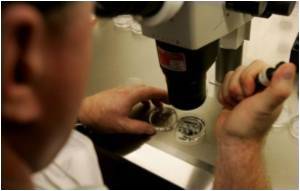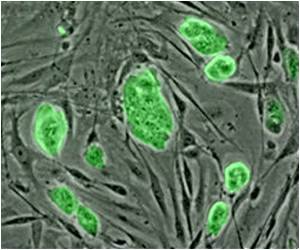
To do so, the researchers extended the use of a technique and suggest that it could be used to study other bacteria that use the same or similar means of infection. The study is published in the September 11 issue of Cell Host & Microbe.
Led by microbiologist Joan Mecsas, the research team studied a specific member of a family of effector proteins known as Yops. Like other effector proteins, Yops alter the immune system to make it possible for bacteria such as Yersinia to spread in infected organs and from organ to organ. The research team studied the Yop known as YopH in order to identify its specific effect within infected spleens.
Many bacteria inject proteins into cells in organs as a part of their infection process. The technique they used, called the TEM-1 reporter system, uses an enzyme and a dye to color-code cells. This enables researchers to see which of the many cells in an organ have been injected. The current study used the TEM system to identify injected cells but then, in an interesting first, gathered these cells from infected organs to study them further.
After isolating the color-coded cells from infected organs, the researchers determined how immune cells are made inactive by effector proteins, such as YopH and other Yops, by comparing cells with and without the specific effector protein. The research team used tissue samples from two sets of mice with Yersinia pseudotuberculosis: those with and without functional YopH proteins. They separated tissue cells from immune cells taken from spleens and compared suspended immune cells from the two sets of mice.
The researchers determined that YopH deactivates multiple proteins and blocks calcium flows vital to normal immune cell communication. Decreased immune cell communication allows Yersinia to continue spreading in infected organs without an effective response from the immune system.
Advertisement
"We know that two forms of food poisoning and some forms of pneumonias caused by E. coli, Salmonella, and Pseudomonas respectively, as well as other types of infections depend on the same system as Yersinia to infect humans and animals. There are also several bacteria that use related means to infect people and animals. This includes the bacteria that cause Legionnaires' disease, ulcers, cholera, various foodborne illnesses, pneumonias and even general infections such as some ear and sinus infections. This technique could be applied to understand these other bacteria," said co-first author Enrique Durand, Ph.D., a graduate of the molecular microbiology program at the Sackler School, now teaching biology in the International Baccalaureate (honors) program at Snowden International School at Copley in the Boston Public Schools system.
Advertisement
Researchers have studied Yersinia since the discovery of the most well-known member of the Yersinia genus, Yersinia pestis, which causes bubonic plague (and which was found in squirrels in a national forest in Los Angeles County this summer). But Yersinia pseudotuberculosis, its near relative, is a standard Yersinia bacterium to study in labs.
Yersinia pseudotuberculosis, which is not related to tuberculosis, is a type of zoonotic bacteria, or one that can be transferred from an animal to a person. Infections in humans are rare and, like bubonic plague, it can be treated with antibiotics.
Source-Eurekalert










